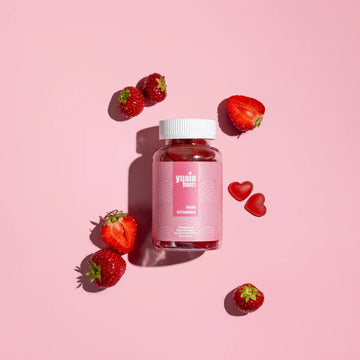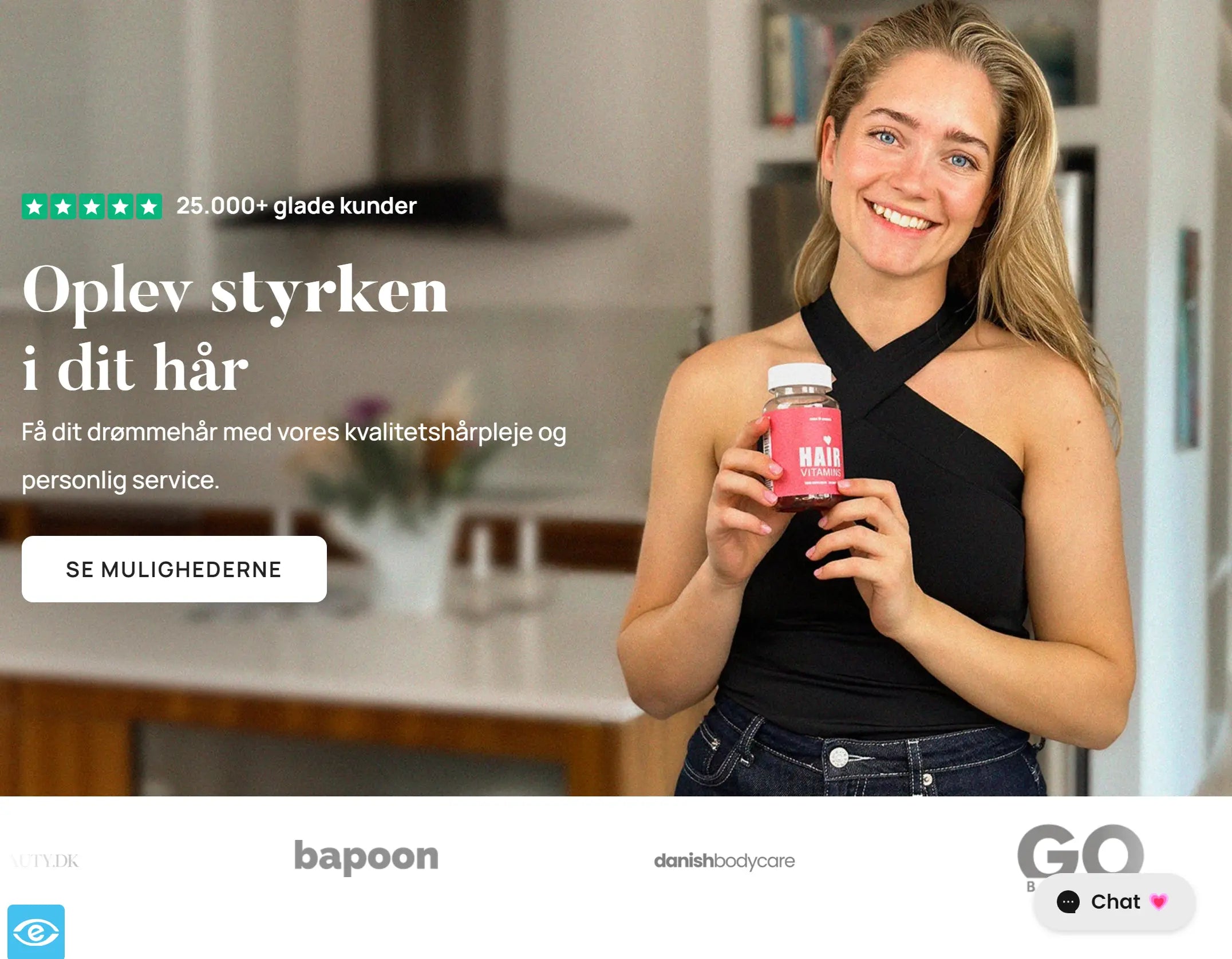
Why is my hair so flat? The reasons why and how to add volume
by Kasper Lindgren on Apr 05, 2025

Read through by Dorthe Kristensen
Hairdresser and former co-owner of the award-winning hairdressing chain Zoom by Zoom
With many years of experience in the hairdressing industry, Dorthe has advised many customers about hair and hair care. Dorthe has read through this blog entry to ensure high quality and professionalism. This blog post is professionally updated on April 5, 2025.
Table of contents
Flat hair is something most of us have experienced at some point. It can make your whole look feel a bit off, even when everything else is on point. Whether you just woke up with limp locks or you’ve been battling flat hair for years, you’re not alone. The good news is that there are usually clear reasons behind the lack of volume—and simple changes that can make a big difference.
Flat hair can feel especially frustrating when you’ve taken the time to wash, dry, and style your hair, only for it to fall flat within minutes. It often feels like your hair just won’t cooperate, no matter what you do. And if you’ve already tried switching shampoos or styling products without seeing results, it’s easy to start feeling stuck.
But here’s the thing: your hair isn’t working against you. More often than not, it’s reacting to your routine, your environment, or your hair type. Once you understand how those things interact, it becomes much easier to adjust your habits in a way that actually gives you the results you’re looking for. Volume isn't just about finding the right product; it's about understanding your hair's needs and giving it the right kind of support.
Why does my hair fall flat?
Flat hair can happen for a number of reasons, and identifying what's happening with your own hair is the first step toward turning things around.
1. Product buildup
Using too many styling products or the wrong conditioner can make your hair feel heavy. Dry shampoo is helpful, but if overused and not properly washed out, it might leave residue behind. Over time, this buildup can coat your strands, making them look dull and lifeless.
Even the water you use matters. Hard water, rich in minerals, can cling to your hair and weigh it down. Heat styling can bake product into the hair, making it tough to rinse out.
Thankfully, this is easy to manage. Try a clarifying shampoo occasionally and be mindful of how much product you apply. A lighter routine can go a long way toward restoring volume.
2. Excess oil at the roots
Some people naturally produce more oil on their scalp, which can weigh down roots and make hair appear greasy. This is especially common with fine or straight hair, where even small amounts of oil can cause strands to clump.
Oil production can also shift with diet, stress, or weather. For example, sweat and heat can speed up how quickly your roots get oily. Touching your hair often doesn’t help either, since it transfers oil from your hands.
To keep oily roots in check, use a gentle, balancing shampoo and don't be afraid to refresh with dry shampoo when needed. It’s about balance—managing oil without stripping away what your hair needs to stay healthy and shiny.
3. Over-washing or under-washing
Striking the right balance in your hair-washing routine is essential for maintaining volume and overall scalp health. Washing too frequently can strip your scalp of its natural oils, leading to dryness and prompting it to overproduce sebum in response. This excess oil can quickly weigh hair down, making it appear flat, greasy, and harder to style.
Conversely, not washing often enough allows oil, sweat, and product residue to build up on the scalp and hair shaft. This accumulation not only affects the hair's texture and appearance but can also contribute to clogged follicles and irritation, which may impact long-term hair vitality.
The key lies in tuning into your scalp’s needs. Factors such as hair type, lifestyle, and climate all influence how often you should wash. Pay attention to how your scalp and roots feel, and adjust your schedule accordingly. A well-balanced routine supports cleaner, lighter, and more voluminous hair.
4. Humidity and environmental stress
Weather and environmental factors significantly impact hair volume. High humidity introduces excess moisture, weighing hair down, while pollution and wind can make it feel dirty or limp more quickly. Shifts between indoor heat and cold outdoor air can cause hair to lose shape and cling to the scalp. In winter, dry air leads to static and flyaways, disrupting overall volume.
Even UV exposure can weaken strands over time, leading to breakage and flatness. Using protective products—like anti-humidity sprays, UV shields, or simply wearing a hat—can help preserve volume and keep your hair looking fuller throughout the day.
5. Your hair type and genetics
Sometimes flat hair is just part of your hair type. If you were born with fine or pin-straight hair, volume might not come naturally. These hair types lie close to the scalp and often lack natural lift.
But that doesn’t mean you can’t work with it. Choosing lightweight products and trying styles like soft layers or a root-lifting blow-dry can help. Understanding your hair’s nature and working with it, rather than against it, is often the key to long-lasting volume.
How to give volume to flat hair
Once you’ve figured out what might be contributing to your flat hair, you can start taking steps to add volume and bounce. Knowing what’s at the root of the problem gives you a real advantage when it comes to finding the right fix for flat hair. From the products you choose to how you wash, dry, and style your hair, every step matters.
Creating lift and texture doesn’t always require a complete overhaul—sometimes small changes can lead to noticeable improvements. Whether it’s adjusting your routine or trying a new haircut, this is your chance to give your hair the attention it needs to look and feel fuller every day.
1. Clarify your hair
Using a clarifying shampoo once a week or every other week helps remove buildup from styling products, hard water minerals, and excess oil—leaving your hair feeling lighter and visibly more lifted. It also creates a cleaner foundation, allowing your everyday shampoo and conditioner to work more effectively.
If your usual products seem less effective or your scalp feels itchy or flaky, buildup may be the cause. Just don’t overuse it—clarifying formulas are potent and can dry out hair if used too frequently. To maintain balance, follow with a lightweight conditioner or mask focused on the ends.
2. Choose the right products
The right product selection is key to supporting volume without weighing hair down. Look for lightweight, volumizing shampoos and conditioners that are designed to lift at the roots and enhance natural body. Ingredients that support fullness—such as panthenol or rice protein—can help build structure without leaving residue.
Sulfate-free formulas are especially beneficial, as they cleanse gently without stripping essential moisture or causing buildup. A well-matched routine not only preserves hair health but also helps maintain a more voluminous, airy feel throughout the day, making flat hair less of a recurring concern.
3. Focus on your roots when styling
Building volume starts at the roots. When blow-drying, flip your head upside down or use a round brush to lift the hair at the base. This technique separates strands and helps prevent the hair from drying flat against the scalp. For best results, let the hair cool in place before moving on—this helps the volume hold throughout the day.
Directing airflow at the roots while pulling upward with a brush adds even more lift. Finishing with the cool shot button sets the style and reduces the chance of collapse. Root-lifting products like sprays, mousses, or texture powders can offer additional support when applied before styling, giving the hair grip and structure.
For an extra boost, try blow-drying in sections and rolling each one into Velcro rollers while warm. This adds volume and shape without heat tools like curling irons, delivering fuller results with longer-lasting hold.
4. Try a different haircut
Talk to your stylist about a haircut that adds dimension and works with your hair type. Layers are a great option because they create movement and make hair appear fuller, especially for those with fine or straight hair that tends to lie flat. Face-framing layers or subtle texture can add lift without sacrificing length, making your hair look bouncier with minimal effort.
Your stylist might also suggest techniques like point cutting or razor cutting to create softness and break up bulk, which can prevent hair from looking weighed down. Even just trimming off heavy ends, which often pull hair down and reduce bounce, can help revive flat strands and give them a fresher, more voluminous look. Regular maintenance trims can ensure your haircut keeps its shape and your hair stays light and lifted.
5. Try a different parting
Changing your part can make a surprising difference in how full your hair looks. When you always part your hair the same way, it tends to flatten over time. Flipping your part—say, from the middle to the side—can give an instant lift at the roots.
Even switching sides occasionally helps, as the hair isn't used to lying that way and will stand up more. A little dry shampoo or texturizing spray at the new part can add some hold and texture.
It's a simple trick that takes no time and doesn’t involve heat or styling tools.
Addressing flat hair with lasting changes
Flat hair might be frustrating, but it’s not unbeatable. Often, a few thoughtful tweaks to your routine can make a big difference. Whether it’s switching up your shampoo, changing how you blow-dry, or getting a cut that works with your hair’s natural texture, the path to fuller-looking hair is well within reach. Try experimenting to find what works best for you—your perfect hair day might be just a wash away.
Get a 10% discount code sent to you
Receive the best tips and tricks for your hair from Lotte and Nanna 🥰
 2-5 day delivery
2-5 day delivery
 25.000+ satisfied customers
25.000+ satisfied customers
 Satisfaction Guarantee
Satisfaction Guarantee








